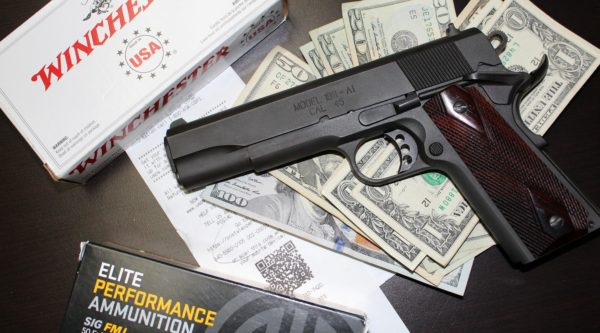
A proposed tax on firearms and ammunition in California that failed by four votes to advance in the state Assembly is “set to be re-introduced in January,” according to ABC News, reporting as part of a series called “Rethinking Gun Violence.”
The proposed excise tax—10 percent on handguns and 11 percent on long guns, “precursor parts” and ammunition—would ostensibly raise revenues to fund what ABC described as “lifesaving violence prevention programs.” The legislation was AB1223.
But, according to the ABC report, Sam Paredes, executive director of Gun Owners of California, contends the tax would be unconstitutional because it mandates a “monetary requirement before someone exercises an enumerated constitutional right.”
ABC notes a similar tax has been instituted in Seattle, Wash., and was upheld by that state’s liberal Supreme Court, but a nearly identical tax instituted in Cook County (Chicago), Ill., was recently struck down by that state’s high court for violating the “uniformity clause” of the Illinois State Constitution. ABC acknowledges Seattle’s tax has never lived up to its revenue forecast of between $300,000 and $500,000.
All of this is in response to rising violent crime rates in California and around the country. The ABC series had earlier reported on how criminals obtain their firearms.
“According to the Department of Justice’s 2016 Survey of Prison Inmates,” the ABC report revealed, “43% of people who used a gun in a crime obtained the firearm off the street or in the underground market, 25% got it from an individual, either from a friend or family member or as a gift, 10% purchased the firearm at a retail source like a gun store or pawn shop, 6% stole it and 17% obtained it in some ‘other’ way such as finding it at the scene or the gun was brought by someone else.”
There is more to it than this. A Justice Department/Bureau of Justice Statistics report on the source of firearms used in crime digs quite a bit deeper, and in the process upends a long-perpetuated allegation from the gun prohibition lobby that gun shows are “arms bazaars for criminals.” According to the report, only 0.8 percent of all prisoners in state and federal custody who were armed during the commission of the crime landing them behind bars got their guns from a gun show. Only 7.5 percent got their guns from a gun shop/sporting goods store.
The highest percentage (43.2%) of criminals got their guns “off the street/underground market,” constituting a plurality. Another 25.3 percent obtained their guns from another individual, and 17.4 percent got their guns from other sources, including finding them at the scene of a crime.
What gun control proponents either do not understand or refuse to acknowledge is that criminals do not normally get their firearms through retail outlets. Thus, any tax added to firearms and ammunition purchases to combat so-called “gun violence” is paid by people who don’t commit crimes. They are being penalized for things they haven’t done.
Gun rights activists have steadfastly insisted that gun control laws, including taxes to raise funds to support “gun violence prevention” efforts only affect the wrong people, and ultimately will not accomplish anything.